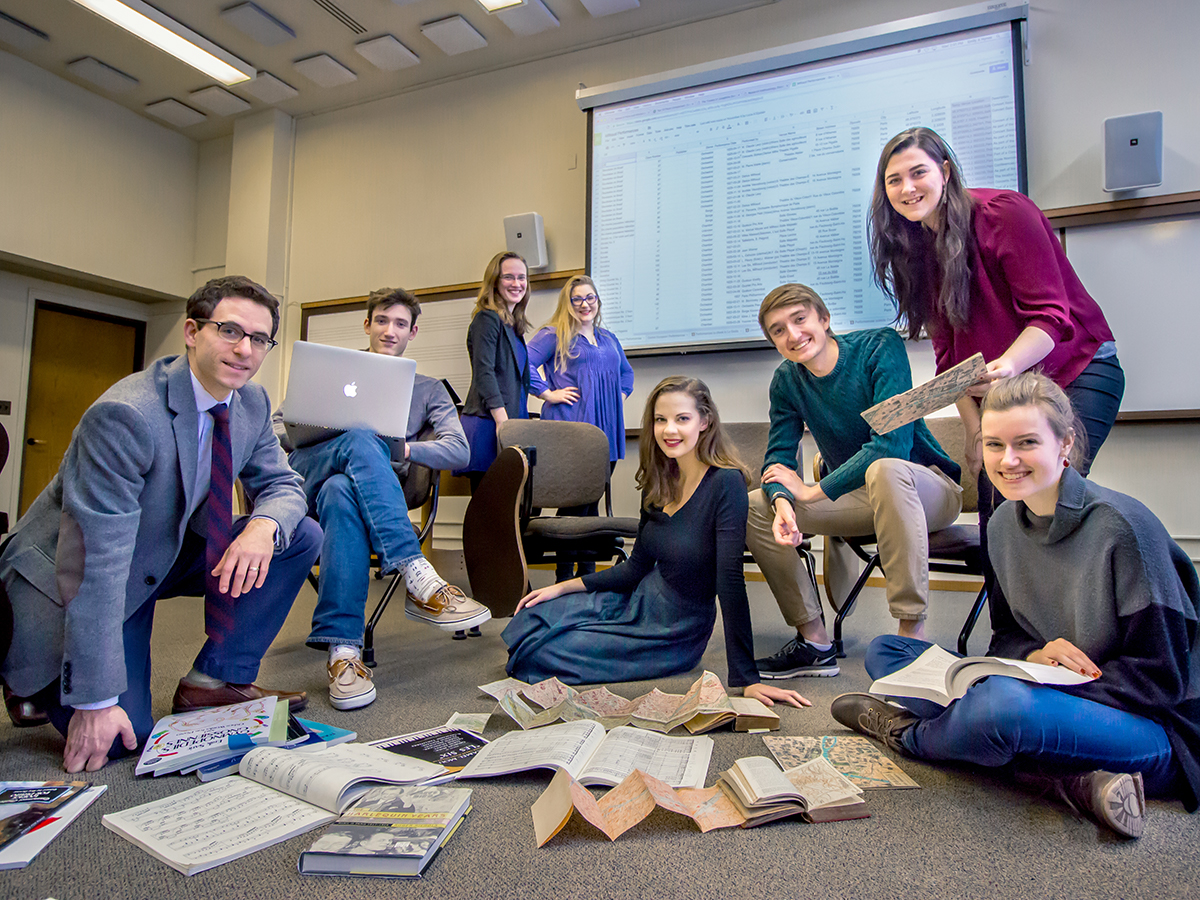Faculty-Mentored Student Research: A High-Impact Academic Practice

The Bibliothèque-Musée de l’Opéra inside the Palais Garnier was the second Parisian library Elizabeth Lacy ’19 stepped into last summer. Tracking leads at three more libraries, Lacy poured through sources and transposed nearly 70 letters to help her St. Olaf team learn more about the rise of prolific composer Darius Milhaud and why so few of his works were performed at France’s national opera.
Lacy’s work was part of Musical Geography, an ongoing project initiated by Assistant Professor of Music Louis Epstein. It maps how aesthetic movements, patronage, and politics influenced Parisian musical Modernism in the 1920s and 1930s. For more than three years Epstein and his students have created over 50 multi-layered digital maps that integrate more than 5,000 images, performances, recordings, and texts, the first of their kind for musicologists.
“In class, print maps weren’t proving useful. Making digital maps helps us ask questions and get answers that hadn’t been considered before,” says Epstein. “It turns out, for example, there’s a gaping historiographical lacuna when it comes to documenting musical life among poor and immigrant communities in Paris.”
“Research today is about working with teams, coordinating tasks, confirming results with your colleagues, and building consensus. No one is an expert on their own. We make better improvements working together.”
— Marci Sortor, Provost and Dean of St. Olaf College
For Lacy, a French and philosophy major who sings in the Chapel Choir, it helped her discern the kind of work she wants to do, whether as a professor or in law.
“I love the idea of cultivating other minds and mine,” says Lacy. “It’s the investigative leap — it can be extremely rewarding. Pulling things together to make a conclusion, presenting your research to others, and seeing how they react — I love that.”
Faculty-mentored research, like this project, engages more than 200 Oles each year in discovering their potential as researchers, investigators, and scholars. Through For the Hill and Beyond, St. Olaf is working to establish a unified program that will coordinate all mentored research. New endowed funds will permanently support more than 110 research opportunities annually.
Since 2011 St. Olaf has increased the opportunities it provides by 75 percent — now 54 percent of graduating seniors report they complete mentored research during their time on the Hill, compared to 47 percent of our Carnegie class peers. Yet these opportunities are primarily supported by grants (35 percent) and tuition (42 percent); endowed funds and current gifts support only 23 percent.
Recent Ole Research Projects |
|---|
| Revealing Connections between the Art and Science of Movement Measuring the brainwaves of people creating, learning, performing, and teaching dance, Oles are helping enhance educational and creative practices. |
| Photogrammetry at the Jeffers Petroglyphs Through Reflectance Transformation Imaging, Oles are producing non-intrusive scans of a half-mile of 7,000 year-old Dakota religious carvings — a site older than Stonehenge — to safely preserve and increase access. |
| Data-based Mathematical Modeling of Oncolytic Tumor Therapy Using mathematical modeling, Oles are predicting outcomes of viral therapy to treat cancer. |
| Voter Turnout in Low-Income Communities Analyzing 2016 voting data, Oles are determining how state and county electoral institutions impact voter participation. |
“This means that as external funding sources ebb and wane, so too does the number of students we can support,” says Marci Sortor, provost and dean of the college. “The potential these opportunities provide to students, though, is exponential.”
“It helped shape the way I think about research as a whole,” says Philip Claussen ’16, now a teaching assistant supported by the French Ministry of National Education. “Our understanding of our world and past is fragmentary. Researchers get to piece together what, how, and why things happened.”
“Knowing how to work together while taking initiative is hugely important,” says Sortor. “Research today is about working with teams, coordinating tasks, confirming results with your colleagues, and building consensus. No one is an expert on their own. We make better improvements working together.”
You must be logged in to post a comment.